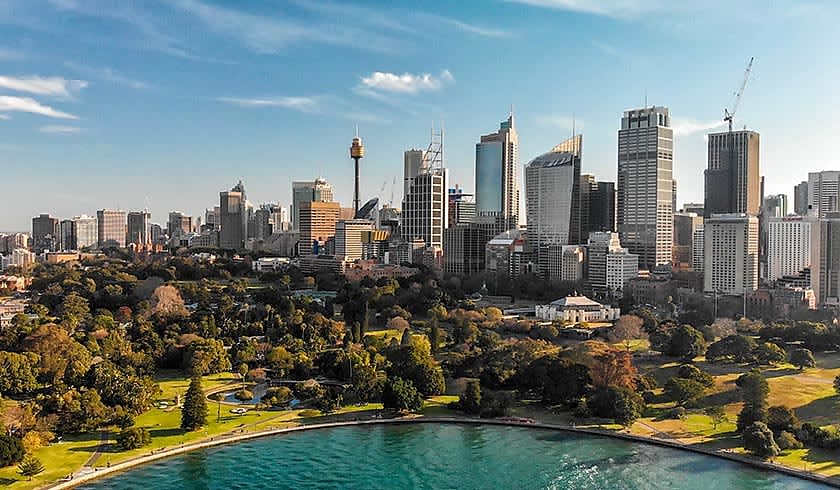Sydney leads the charge as national home values rise again
As the latest full financial year drew to a close, Australian house prices increased for the fourth month running according to CoreLogic’s latest Home Value Index (HVI).

Led by the New South Wales capital, where the research firm’s HVI rose 1.7 per cent during the sixth month of the year, CoreLogic reported Australian home values climbed 1.1 per cent last month. While this marks the fourth consecutive month since the market’s February 2023 floor when prices have since risen, CoreLogic noted prices nationally remain 6 per cent below their April 2022 peak.
Reflecting on the New South Wales capital’s market performance throughout June, Tim Lawless, CoreLogic’s research director, explained the city’s price growth over recent months is the equivalent of “median house values rising by roughly $4,626.”
Every Australian capital aside from Hobart recorded value increases in June. Aside from Sydney, Brisbane was the only other market to record a rise over 1 per cent (1.3 per cent), while Adelaide and Perth (both 0.9 per cent) fell just short. Adelaide’s HVI jumped 0.7 per cent, followed by Darwin (0.5 per cent), and Canberra (0.4 per cent).
On the regional front, all rest-of-state markets bar regional Victoria and regional Tasmania, where values dropped 0.4 per cent and 0.3 per cent respectively, recorded an HVI increase over the final month of the 2022-23 financial year. Both regional South Australia and regional Queensland recorded price increases of 1 per cent.
Driving the softer pace of regional Australian property price growth is demographic trends returning to pre-pandemic normality. Mr Lawless reported regional migration, which boomed throughout the COVID-19 pandemic, has “normalised over the past year, resulting in less housing demand.”
He reported that it’s not only Australian residents failing to flock into our nation’s regional markets, with incoming international migration “skewed towards the capital cities rather than the regions.”
Driving home values up is a severe lack of listings across the country. Mr Lawless revealed new capital city listings are nearly 10 per cent below their previous five-year average, while total inventory levels are a quarter below normal.
“The recovery trend is occurring across relatively thin volumes,” he explained.
“Although home sales are around average levels, available supply is well below. It is this disconnect between available supply and demonstrated demand that is driving housing values higher.”
According to Mr Lawless, the slowdown in the pace of national value growth, which saw CoreLogic’s HVI drop 0.1 per cent between May and June “could be a reflection of a change in sentiment as interest rate expectations revise higher.”
It should be noted May’s HVI increase was the largest monthly growth for Australian home values in 18 months.
With the nation bracing for the first Reserve Bank of Australia (RBA) meeting of the new financial year this week (4 July), Mr Lawless noted additional cash rate increases could further pump the brakes on national price growth. However, this isn’t necessarily a negative outcome for the market.
“Higher interest rates and lower sentiment will likely weigh on the number of active home buyers, helping to rebalance the disconnect between demand and supply.”
Moving forward, and with at least one more interest rate hike predicted in the back half of the year, Mr Lawless believes the movements of the RBA will be crucial for Australia’s rebounding property market.
“It’s hard to imagine the recent pace of growth in housing values being sustained while sentiment is close to recessionary lows and the full complement of borrowers are yet to experience the rate hiking cycle,” he said, referencing the fabled mortgage cliff which looms large on the Australian horizon.
Previously, Australia’s central bank predicted nearly 900,000 Australian mortgage holders would roll off fixed rates this year, resulting in their mortgage rate shooting from 2 per cent to around 6 per cent.
Higher repayments paired with low income growth and increased cost-of-living pressures mean an increase in mortgage arrears looks likely towards the back end of 2023.
